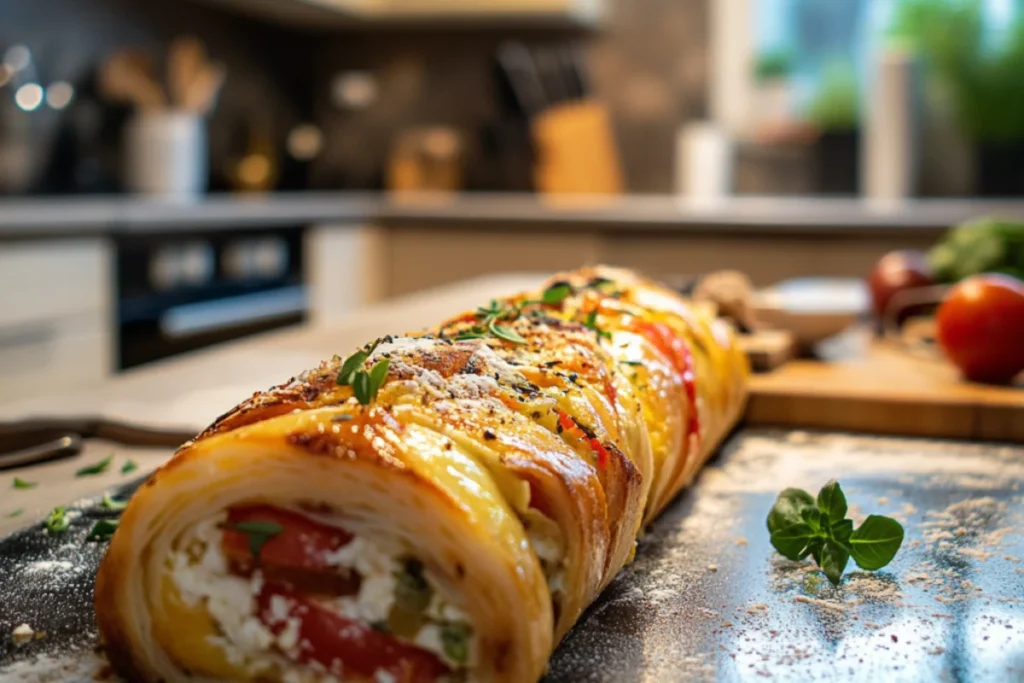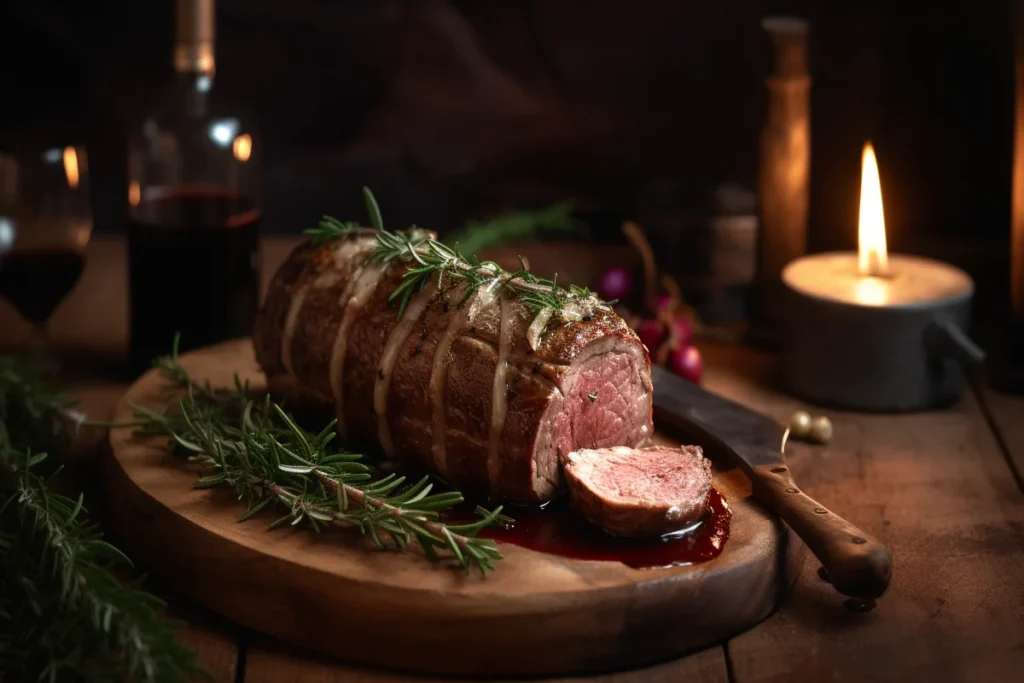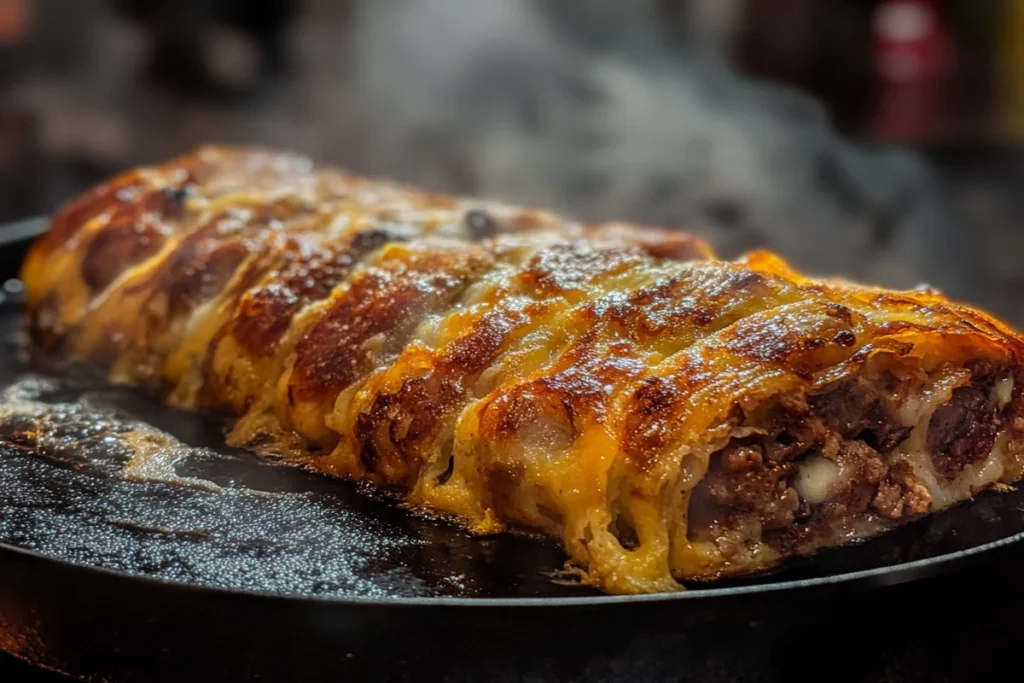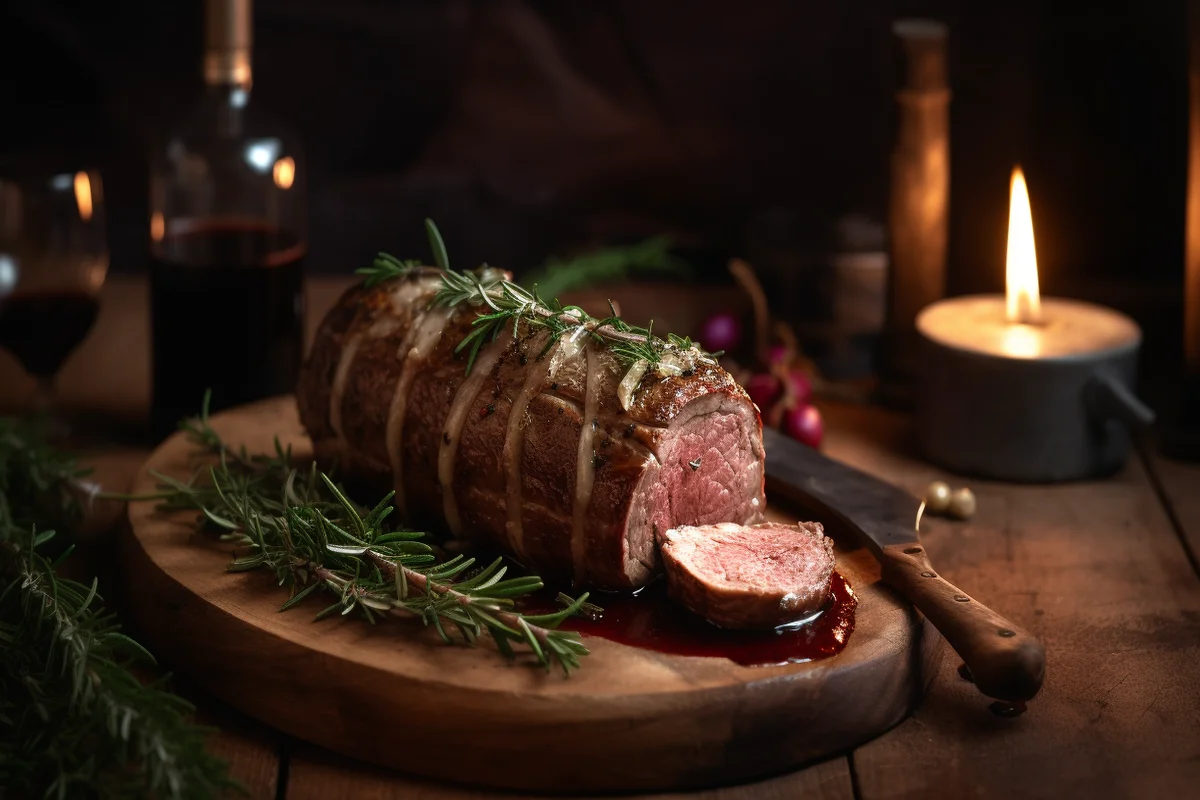
What is a Roulade in Cooking? A Complete Guide to This Culinary Art
When it comes to versatility and elegance in the culinary world, few dishes capture attention quite like a roulade. Whether savory or sweet, this rolled delight has graced the tables of home cooks and professional chefs alike. From its intriguing history to its practical preparation techniques, roulades offer endless opportunities for creativity. In this article, you’ll learn everything about what is a roulade in cooking—its types, essential ingredients, preparation methods, and even some classic recipes to try at home.
Part 1: Introduction to Roulade
Definition of Roulade
At its core, cooks create a roulade by rolling a base ingredient, such as meat, sponge cake, or even vegetables, around a flavorful filling. The French term rouler, which means “to roll,” gives us the word “roulade.” However, cultures around the world embrace this culinary concept, reflecting a variety of influences.
People often celebrate roulades for their aesthetic appeal, as the cross-section reveals a stunning spiral of layers. Chefs typically prepare savory roulades by using a meat base filled with vegetables, herbs, or cheese, while they create sweet roulades, like the popular Swiss roll, as desserts with fillings such as cream or jam.
Historical Background
The origin of roulades traces back to European cooking traditions, where cooks innovated by rolling ingredients for both practicality and presentation. French and German cuisines primarily introduced early forms of roulades. For instance, Germans created the classic Rinderroulade, a beef roulade stuffed with pickles and onions, while the French prepared lighter versions filled with cheese or vegetables.
Over time, this technique expanded beyond Europe, influenced by diverse cultures and their unique ingredients. Today, whether it’s a Swiss roll in a bakery or a chicken roulade at a fine-dining restaurant, roulades continue to inspire chefs around the world.
Culinary Significance
Why are roulades so beloved? Besides their visual charm, they’re practical. Roulades make use of thinner cuts of meat or delicate sponge cakes, transforming simple ingredients into sophisticated dishes. They’re also highly adaptable—you can tailor fillings to suit dietary needs or preferences. Moreover, their compact form ensures even cooking and ease of serving, making them perfect for special occasions or everyday meals.
For example, savory roulades can be a centerpiece of a holiday feast, while sweet roulades double as crowd-pleasing desserts. Their versatility has undoubtedly cemented them as a staple in kitchens worldwide.
Part 2: Types of Roulades
Savory Roulades
Savory roulades are the hearty, flavorful stars of dinner tables. These roulades typically feature a protein base such as chicken, beef, or fish, flattened to create a pliable sheet ready for stuffing. Common fillings include spinach, mushrooms, cheese, or a mix of herbs and spices. The rolled dish is then secured and cooked to perfection through methods like roasting or braising.
For instance, a chicken roulade might be stuffed with creamy ricotta and spinach, then baked to achieve a golden-brown exterior. Similarly, beef roulades like the German Rinderroulade are often filled with tangy pickles, onions, and mustard, creating a delightful balance of flavors.
The best thing about savory roulades? They’re a one-stop meal—protein, vegetables, and flavor all in one elegant package.
Sweet Roulades
If savory roulades are the main course, sweet roulades are undoubtedly the dessert. A sweet roulade, like the classic Swiss roll, is crafted using sponge cake as the base. This flexible cake is rolled around a filling, often made of whipped cream, fruit preserves, or chocolate ganache.
One hallmark of dessert roulades is their aesthetic appeal. When sliced, the spiral of the cake and filling offers a feast for the eyes as much as the palate. Creative bakers sometimes elevate their roulades with intricate designs or vibrant colors, making them the centerpiece of celebrations.
Did you know? A festive version of the Swiss roll, the Yule log or Bûche de Noël, is a holiday favorite in many parts of the world.
Vegetarian and Vegan Roulades
For those seeking plant-based options, vegetarian and vegan roulades provide a plethora of possibilities. A vegetable roulade might use eggplant, zucchini, or even a large leaf like cabbage or Swiss chard as the base. These are often rolled around fillings such as roasted vegetables, quinoa, or spiced lentils.
Vegan sweet roulades are equally delightful. Bakers can use egg-free sponge cakes and dairy-free fillings like coconut cream or cashew-based frostings. These options ensure everyone at the table can enjoy the elegance of a roulade without compromising their dietary choices.
Why Understanding Roulade Types Matters
Knowing the different types of roulades not only broadens your culinary repertoire but also allows you to cater to various preferences and occasions. Whether you’re crafting a savory chicken roulade for dinner or baking a sweet Swiss roll for dessert, the possibilities are endless!
Part 3: Components of a Roulade
Base Ingredient Selection
The foundation of any roulade is its base, which determines the structure and flavor profile of the dish. For savory roulades, proteins such as chicken, beef, pork, or fish are commonly used. These are pounded thin to create an even surface for rolling. In vegetarian or vegan roulades, vegetables like eggplant, zucchini, or large leafy greens serve as an excellent substitute.
For dessert roulades, sponge cake is the go-to choice due to its soft, flexible texture. A perfectly baked sponge is essential—it should be moist enough to roll without cracking yet firm enough to hold its shape. Bakers often prefer genoise or chiffon sponge cakes for this reason.
Filling Options
The filling is the heart of a roulade. It’s where flavors, textures, and creativity come alive. For savory roulades, filling choices range from earthy sautéed mushrooms to creamy ricotta blends, complemented by fresh herbs and spices. Want a burst of bold flavor? Add roasted red peppers, caramelized onions, or crumbled feta.
Sweet roulade fillings can be as classic or inventive as you like. Whipped cream, mascarpone, fruit preserves, or chocolate ganache are timeless favorites. If you’re feeling adventurous, consider fillings like matcha cream, citrus curd, or even a spiced pumpkin puree. The key is to balance the filling’s texture and sweetness with the base.
Sauces and Accompaniments
No roulade is complete without the right sauce or accompaniment. For savory roulades, sauces like rich gravy, tangy tomato-based reductions, or light herb-infused oils enhance the dish’s overall flavor. Think of a beef roulade paired with a red wine reduction or a chicken roulade with a velvety mushroom sauce.
When it comes to sweet roulades, toppings like powdered sugar, chocolate drizzle, or fresh berries can elevate the presentation and taste. A dollop of whipped cream or a side of fruit compote also complements the dessert beautifully.
Tips for Perfect Component Pairing
Combining the right base, filling, and sauce can transform a simple roulade into a culinary masterpiece. For example:
- Pair robust fillings with lighter bases to avoid overpowering flavors.
- Match creamy sauces with tender roulades for a cohesive mouthfeel.
- Use contrasting textures to keep every bite interesting, like a crunchy nut filling in a soft sponge roulade.
Part 4: Preparation Techniques

Flattening and Rolling
The first step to making a roulade is preparing the base ingredient, which involves flattening it into a thin, uniform sheet. For savory roulades, meat such as chicken or beef can be pounded using a meat mallet or rolling pin, ensuring even thickness. This step is crucial because uneven layers may lead to uneven cooking or tearing when rolled.
When working with sponge cakes for dessert roulades, precision is equally important. After baking, the cake should be turned out onto a clean kitchen towel dusted with powdered sugar. Rolling the cake immediately while it’s warm helps “train” it to hold its shape and prevents cracking later when filling is added.
Securing the Roulade
Once the filling is spread evenly across the base, it’s time to roll. For savory roulades, start from one end and carefully roll the meat or vegetable into a tight spiral. To keep everything intact, secure the roulade with kitchen twine or toothpicks. A key tip is to not overfill—too much filling may spill out or make rolling difficult.
For dessert roulades, the process is slightly more delicate. After spreading the filling, gently roll the cake using the towel as a guide. Take your time to ensure the roll is tight without compressing the filling.
Cooking Methods
Cooking a roulade depends on its type and base ingredient. Savory roulades can be cooked using various techniques:
- Baking: Ideal for poultry or sponge roulades, baking ensures even cooking and allows flavors to meld.
- Braising: Perfect for tougher cuts of meat like beef, as the slow cooking process tenderizes the roulade while infusing it with rich flavors.
- Steaming: A great option for delicate vegetable-based roulades, maintaining their structure and nutrients.
For sweet roulades, no additional cooking is usually required after rolling unless you’re adding a glaze that needs to be set in the oven briefly. Instead, they’re refrigerated to firm up before slicing and serving.
Tips for Seamless Preparation
- Always use a sharp knife to trim edges for a clean look.
- Work on a flat, clean surface to ensure easy rolling.
- Chill dessert roulades after rolling to let the filling set and make slicing easier.
Preparation techniques can make or break a roulade, but mastering these steps ensures your dish will look and taste extraordinary. For more details on roulade preparation, visit Roulade – Cooking Information.
Part 5: Popular Roulade Recipes
Beef Roulade (Rinderroulade)
One of the most iconic savory roulades is the German Rinderroulade. This dish typically features thinly sliced beef, rolled around a filling of mustard, onions, pickles, and bacon (optional). The roulade is then braised in a flavorful broth until tender, creating a hearty, comforting meal.
To make it:
- Start with thin beef slices, pounded for uniformity.
- Spread a thin layer of mustard and layer with onions, pickles, and seasonings.
- Roll tightly, secure with kitchen twine, and brown on all sides before braising in a savory liquid for a couple of hours.
The result? A tender, flavor-packed roulade that pairs perfectly with mashed potatoes or steamed vegetables.
Chicken Roulade
Chicken roulades are a versatile option that can be adapted to suit various tastes. One popular version includes a filling of spinach, ricotta, and garlic, offering a creamy and slightly tangy flavor.
Here’s how:
- Pound chicken breasts until thin.
- Spread the ricotta-spinach mixture evenly and roll the chicken tightly.
- Secure with toothpicks and bake until the chicken is cooked through and golden.
This dish is excellent for dinner parties or as a protein-rich meal that’s as satisfying as it is elegant.
Swiss Roll
For dessert lovers, the Swiss roll is a classic sweet roulade that never disappoints. This sponge cake-based roulade is typically filled with whipped cream or fruit preserves and is a hit at gatherings.
To prepare:
- Bake a light, fluffy sponge cake and roll it up immediately after baking with a kitchen towel to prevent cracks.
- Once cooled, unroll and spread your desired filling—jam, cream, or even chocolate ganache.
- Roll it back up tightly and dust with powdered sugar before serving.
The beauty of the Swiss roll lies in its simplicity and the endless ways you can customize it. Add a touch of zest with citrus fillings or opt for a rich chocolate finish for indulgence.
Why These Recipes Are Must-Try Options
Each of these roulades showcases the versatility and adaptability of this dish. Whether you’re craving something savory or sweet, these recipes provide a great starting point for experimenting with flavors and ingredients.
For more inspiration and additional roulade variations, explore Recipes.net’s Guide to Roulades.
Part 6: Serving and Presentation

Plating Techniques
The way you present a roulade can elevate its appeal, turning it into a feast for the eyes as well as the palate. For savory roulades, slice them into even portions to showcase the spiral layers of filling and base. Arrange the slices neatly on a plate, slightly overlapping, and drizzle the accompanying sauce over or around the roulade for added visual impact.
For dessert roulades, like a Swiss roll, serve each slice upright to display its signature spiral design. Dust with powdered sugar, add a sprig of mint, or garnish with fresh fruit for an elegant touch. Using contrasting colors on the plate, such as a bright sauce under a chocolate roulade, adds drama and sophistication.
Pairing Roulades with Sides
The right side dish can enhance the flavor of a roulade and complete the meal. Here are some excellent pairing ideas:
- Savory Roulades: Creamy mashed potatoes, roasted vegetables, or a crisp green salad balance the rich flavors of meat or vegetable roulades. Grains like quinoa or couscous also provide a hearty complement.
- Sweet Roulades: Serve with a dollop of whipped cream, a scoop of ice cream, or a drizzle of fruit coulis. The lightness of these sides balances the richness of the dessert roulade.
Cultural Serving Traditions
Roulades are served differently depending on the cultural context. In European traditions, such as German cuisine, savory roulades like Rinderroulade are often accompanied by hearty sides like dumplings or braised cabbage. In French-inspired dining, roulades are typically plated individually with a small amount of sauce for an artistic presentation.
Dessert roulades also carry cultural significance. For example, the Bûche de Noël is not just a dessert but a festive centerpiece during Christmas celebrations in France. Each culture brings its unique flair to how roulades are prepared, served, and enjoyed.
Tips for Enhancing Presentation
- Use garnishes that complement the roulade’s flavor, like herbs for savory dishes or edible flowers for sweet ones.
- Invest in quality knives to ensure clean, sharp slices. A well-cut roulade enhances its visual appeal.
- Play with height and layering on the plate to add dimension to the presentation.
With the right plating and serving techniques, roulades can transform from a simple dish into an impressive showstopper. Whether you’re hosting a dinner party or enjoying a quiet evening at home, these tips ensure your roulade shines on the table.
Part 7: Frequently Asked Questions (FAQs)
What is the origin of the term “roulade”?
The word “roulade” comes from the French term rouler, meaning “to roll.” It reflects the dish’s fundamental characteristic of being rolled around a filling. While the concept is widely associated with French cuisine, similar rolled dishes have been part of culinary traditions across Europe and beyond for centuries.
Can roulades be made ahead of time?
Absolutely! Many roulades can be prepared in advance. For savory roulades, you can assemble and refrigerate them a day before cooking. For sweet roulades like a Swiss roll, they can be made and stored in the fridge, tightly wrapped, to maintain freshness. Just remember to add garnishes or sauces right before serving for the best presentation.
What are common mistakes to avoid when making a roulade?
Some common pitfalls include overfilling the roulade, which can cause it to burst or lose its shape, and rolling too loosely, which may lead to uneven cooking or cracking. For dessert roulades, not rolling the sponge cake immediately after baking can cause it to crack later when filled.
Are there gluten-free roulade options?
Yes! Gluten-free roulades are easy to make. For savory roulades, focus on naturally gluten-free bases like chicken or vegetables. For sweet roulades, use a gluten-free flour blend to create a sponge cake. Just ensure that all other ingredients, such as fillings, are also gluten-free.
How do I prevent my roulade from falling apart during cooking?
For savory roulades, secure the roll with kitchen twine or toothpicks to hold its shape during cooking. Make sure to roll it tightly but not so tight that the filling squeezes out. For dessert roulades, roll the sponge cake while it’s still warm to prevent cracking, and chill it after filling to help it set.
What are some vegetarian fillings for roulades?
Vegetarian fillings offer endless creativity. For savory roulades, consider combinations like spinach and ricotta, roasted vegetables with goat cheese, or spiced lentils with caramelized onions. For sweet roulades, try fruit preserves, coconut cream, or a nut butter and chocolate spread.
Enhance Your Culinary Skills
Roulades are a testament to the artistry of cooking, combining technique, flavor, and presentation. Whether you’re exploring savory or sweet versions, this dish offers something for everyone. The versatility of roulades ensures that they remain a beloved staple across cultures and occasions.
Conclusion
Roulades are a versatile and visually stunning dish that can elevate any meal, whether it’s a comforting weeknight dinner or an elegant dessert for special occasions. Their unique structure—a rolled base encasing a flavorful filling—makes them as fun to prepare as they are to eat. From savory classics like beef roulades to the delightful sweetness of a Swiss roll, roulades offer endless possibilities for creativity in the kitchen.
By mastering the techniques for rolling, securing, and cooking, you can create a roulade that not only tastes incredible but also looks impressive on the plate. Whether you’re crafting a vegetarian roulade, exploring gluten-free options, or sticking with traditional recipes, there’s a version of this dish for everyone.
The next time you’re looking for a dish that combines flavor, elegance, and versatility, remember the roulade. With a little practice and imagination, it might just become one of your signature creations in the kitchen. Happy cooking!

